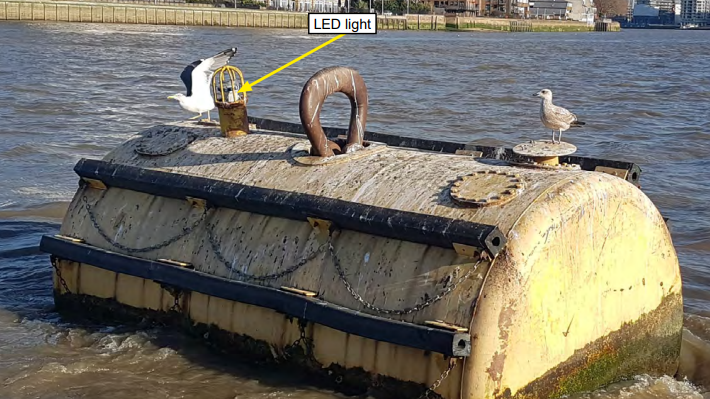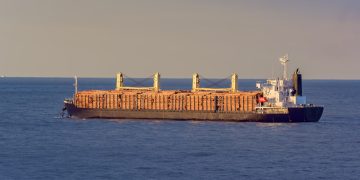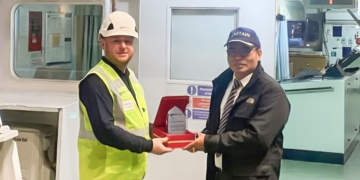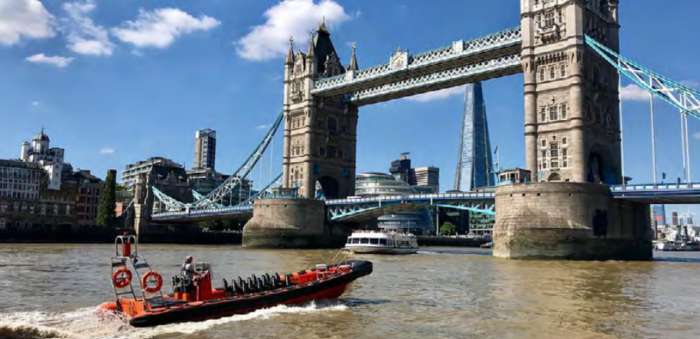UK MAIB focuses on a collision that took place between an inflatable boat and a mooring buoy, on River Thames in London. The collision resulted to two passengers and the boat’s two crews, with minor injuries, that were later transmitted to the hospital. In the meantime, the commercially operated rigid inflatable boat suffered severe damages.
On Thursday, January 17 2019, Tiger One, a commercially operated rigid inflatable boat collided with a mooring buoy on the River Thames in London, with a speed of 26 knots in night hours.
According to the report, the skipper had no visibility of the mooring buoy in time to be able to take avoiding action. Possibly, the buoy’s light was difficult to see against the back scatter of shore lights and might also have been obscured to some degree by birds.

Moreover, the report supports that the skipper wasn’t that much experienced on navigating in night hours, through darkness.
He was navigating solely by eye and had either thought that Tiger One was closer to the centre of the navigable channel, or had forgotten that the buoy was there.
After the incident, the skipper called the coast guard asking for assistance. UK MAIB highlighted that the skipper informed for 10 than eight passengers that were onboard, reflecting the shock he was in.
The skipper’s urgency call was prompt, but his report that there were ten persons on board rather than eight, which was incorrect and misleading, was indicative of the degree of shock he had experienced.
- After investigating the incident, UK MAIB concluded that Tiger One collided with the outer LST buoy because its skipper did not see the buoy until it was so close it became too late to take avoiding action.
- Also, the light on the buoy might have been difficult to see against the backscatter from the bright lights in Greenwich. It might also have been obscured to some degree by birds.
- Tiger One’s skipper was experienced in navigating Greenwich Reach in daylight, but he had little experience of operating in the area at speed during darkness.
- The skipper was navigating solely by eye and he either thought that the RIB was close to the centre of the navigable channel, or had forgotten that the outer Ship Tier buoys were there.
- More serious consequences were prevented, among other things, by Tiger One’s construction, seating arrangements, and the use of a kill cord.
- The potential for more serious consequences to result from similar accidents in the future is significant and warrants a review of high-speed open boat operations on the River Thames during darkness.
#Actions Taken#
Following, after the incident, Tiger One’s owner, revised its safety management system, risk assessments and passage to include, among other things, procedures for navigating during darkness. Implemented procedures for the reporting of crew and passenger numbers to a designated person ashore.
In the meantime, actions were taken from the Port of London Authority, according to which:
- Removed authorisation for open deck, high-speed craft issued with a certificate of compliance to navigate above 12 knots during darkness.
- Taken steps to enable passenger numbers on open deck, high-speed craft to be reported via AIS.
- Trialled the use of isophase lights on the Greenwich Ship Tier buoys. The trial was unsuccessful due to a loss of light intensity, and research into the use of alternative lights and light characteristics is ongoing.
- Further amended its technical requirements for certificates of compliance to include a formal annual independent audit of RIB operator safety management systems, the results of which will be considered in the process for the certificate’s annual renewal.
- Revoked Tiger One’s certificate of compliance; the certificate was reissued following the owner’s revision of risk assessments, passage plans and the safety management system.
- Reviewed the risk assessments, passage plans and the safety management systems of all high-speed RIB operators.
Concluding, the Royal Yachting Association
Included guidance on night operations and the reporting of passenger numbers in its latest revision of ‘Passenger Safety on Small Commercial High Speed Craft and Experience Rides’.

































































